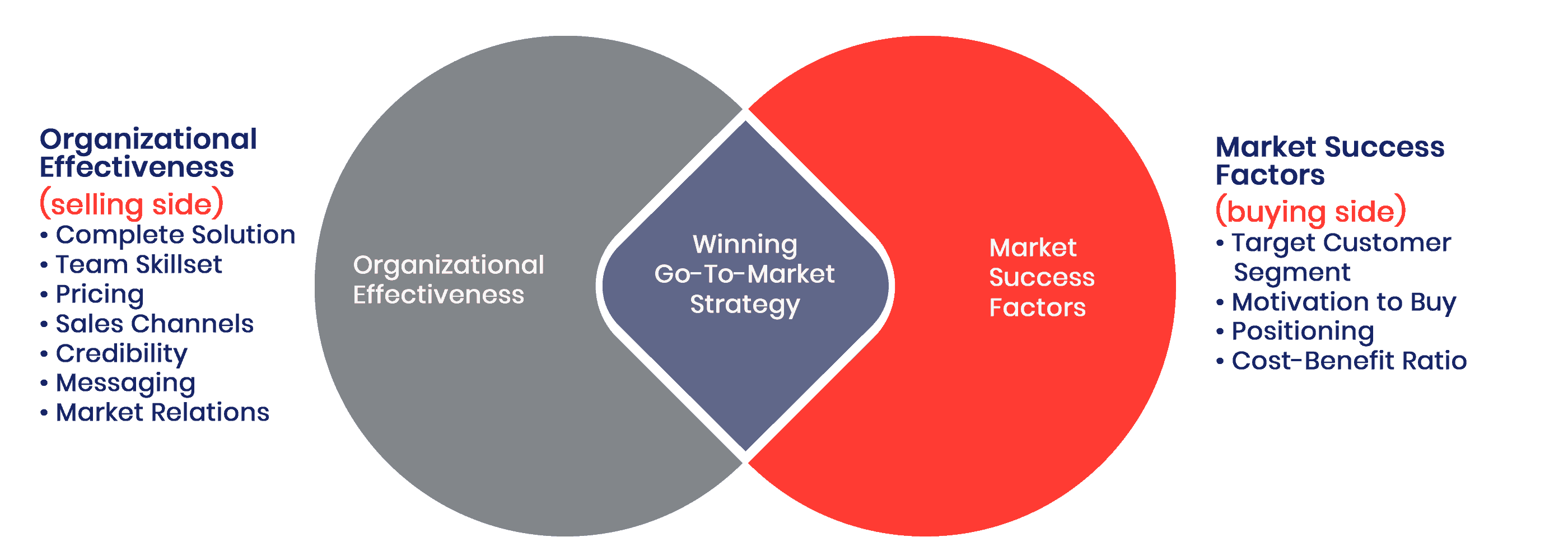Holistic Go To Market Strategies
Use a holistic go to market strategy to accelerate growth and beat your competition

What is a Holistic Go To Market Strategy?
As businesses evolve in the 21st century, one of the most successful concepts has been holistic market-driven strategy. It moves GTM beyond the marketing or product marketing departments to an enterprise-wide role in strategy for all business functions.
Rather than working in silos on isolated projects like traditional marketing departments, the holistic approach identifies opportunities, designs products and services, and builds the ecosystem or infrastructure to support them. Holistic market strategies encapsulate the business as one inter-dependent entity, which enables a cross-enterprise perspective to value creation and delivery.
Beyond emphasizing the marketing function as the core of the business, holistic leaders are also concerned with other profit drivers that traditional marketers often neglect, including the role the business plays in the health of key market categories, in market ecosystems, and in the lives of customers.
Therefore, a holistic strategy for going to market is developed at the intersection of market pull (buying) and organizational effectiveness (selling).

Holistic Go To Market Strategy Checklist
Accordingly, an effective GTM strategy includes eleven core components:
- Analyze the Target Market: How do you describe and reach the identifiable economic group of buyers that will be your initial target market, and what will your follow-on targets be?
- Customer Motivation to Buy: Who is the primary buyer and/or user of your product within the target market, and what motivates them to buy sooner rather than later?
- Positioning: What market position is available for you to occupy and what is your competitive differentiation strategy?
- Cost-Benefit Ratio: Is the cost-benefit ratio of your offering (a.k.a. “value”) following the lifecycle of market adoption?
- Define the Complete Offering: What makes the product “low risk, complete and compelling” in the eyes of your initial target customer? Who are the necessary partners and allies required to deliver the complete solution?
- Team Skillset: Do you have the organizational and operation skillsets required to serve the changing needs of your customers?
- Pricing Strategy: Is your pricing strategy rewarding for everyone involved in selling, delivering and servicing your product offering?
- Sales/Distribution Channels: Does your approach to selling match the stage of technology adoption for your application?
- Credibility: What evidence is required to make your selected positioning strategy credible to the market?
- Messaging: Which positioning messages are most important to each adopter group in the technology adoption lifecycle?
- Market Relations: Have you identified the top 10% of your market ecosystem, and how will you establish an ongoing dialogue with each top-tier influencer?
A winning go to market strategy focuses on developing a competitive edge and figuring out how to reach a target audience. However, it is not a specific event, such as a product launch. Rather, GTM strategy focuses on the entire adoption-lifecycle of a product or service – from innovators and early adopters to laggards.
Market Strategy Results
In other words, an effective market strategy gives you clarity on:
✅ Who? — Which target segments are most attractive to address and which are not
✅ Why? — Understanding the customer’s motivation to buy, and how they buy
✅ What? — Creating offers that provide complete, compelling solutions
✅ Why you? — How to position the value you deliver in a way that is based on today’s buyer and market environment
Conclusion
Our 11-step strategy framework helps companies collaboratively plan and execute to create and sustain market leadership. It empowers teams to gain clarity regarding their product category and its stage of innovation-adoption. As a result, you will reach consensus on product marketing strategies, explore and prioritize target customer scenarios, manage vertical market initiatives, and define or execute go-to-market programs.

